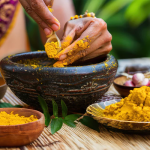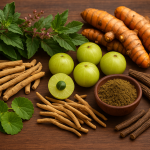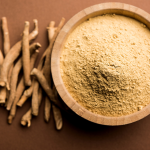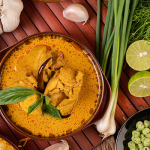Introduction to Ayurvedic Skincare
Ayurveda, the ancient Indian science of life, has long been a treasure trove for natural beauty solutions. While modern skincare often leans heavily on chemicals, Ayurveda believes in healing the skin from within using time-tested herbs and holistic rituals. Whether you’re dealing with dullness, pigmentation, or premature aging, Ayurvedic skincare provides gentle yet powerful remedies for radiant, youthful skin.
In this article, we’ll explore the top 10 Ayurvedic herbs and effective beauty rituals that naturally lighten the skin, add a radiant glow, and delay signs of aging—all backed by centuries of wisdom. These time-tested remedies not only help you achieve healthier, brighter skin but also bring balance to your body and mind using nature’s purest ingredients. Whether you’re dealing with dullness, pigmentation, or early signs of aging, Ayurveda has gentle yet powerful solutions waiting for you.
Why Ayurveda for Skin Lightening and Anti-Aging?
Unlike chemical treatments that offer quick fixes, Ayurveda works at the root level. It purifies the blood, balances doshas (Vata, Pitta, Kapha), and nourishes the skin cells from within. This not only enhances your skin tone naturally but also promotes long-term skin health.
Key benefits of Ayurvedic skincare:
- Boosts skin radiance and brightness naturally
- Fights acne, blemishes, and pigmentation
- Delays signs of aging like wrinkles and fine lines
- Improves skin texture and hydration
- Detoxifies and purifies blood to give a natural glow
- Balances oil production and controls breakouts
- Nourishes skin deeply using plant-based ingredients
- Safe for all skin types when used properly
Top 10 Proven Ayurvedic Herbs for Glowing & Lighter Skin
1. Manjistha (Rubia cordifolia)
A powerful blood purifier known to detoxify the body and reduce skin inflammation.
Benefits:
- Clears acne and pimples
- Reduces pigmentation and dark spots
How to Use:
- Mix manjistha powder with rose water
- Apply as a paste on face 2–3 times a week
2. Turmeric (Haldi)
This golden spice is revered for its anti-inflammatory and antibacterial properties.
Benefits:
- Brightens skin tone
- Reduces dark spots and scars
How to Use:
- Mix turmeric with raw milk or honey
- Apply as a face mask for 10–15 minutes
3. Sandalwood (Chandan)
A cooling and calming herb ideal for all skin types.
Benefits:
- Soothes irritated skin
- Helps lighten tan and improve texture
How to Use:
- Mix sandalwood powder with rose water
- Use as a calming face pack 2–3 times weekly
4. Neem (Azadirachta indica)
A natural antibacterial and antifungal herb.
Benefits:
- Fights acne and breakouts
- Detoxifies skin and clears clogged pores
How to Use:
- Make a paste of neem powder and water
- Apply to acne-prone areas and rinse after 15 mins
5. Aloe Vera (Kumari)
A skin-soothing and deeply hydrating plant.
Benefits:
- Calms irritation and inflammation
- Hydrates skin and improves elasticity
How to Use:
- Use fresh aloe gel directly on skin
- Leave overnight or wash after 20 mins
6. Kumkumadi Oil
A classical Ayurvedic facial oil made from saffron, sandalwood, and other herbs.
Benefits:
- Brightens complexion and reduces blemishes
- Minimizes fine lines and wrinkles
How to Use:
- Apply 2–3 drops at night
- Massage gently into skin until absorbed
7. Saffron (Kesar)
A luxurious herb known for its skin-enhancing benefits.
Benefits:
- Lightens skin tone naturally
- Reduces under-eye darkness and dullness
How to Use:
- Soak saffron in milk
- Dab onto skin with a cotton ball
8. Licorice (Mulethi)
A root with natural brightening and healing powers.
Benefits:
- Fades sun spots and discoloration
- Heals skin and soothes inflammation
How to Use:
- Mix licorice powder with curd or yogurt
- Apply as a mask twice weekly
9. Tulsi (Holy Basil)
A sacred herb with powerful detoxifying properties.
Benefits:
- Prevents acne and blemishes
- Controls oil and refreshes skin
How to Use:
- Crush tulsi leaves into a paste
- Apply to face and rinse after 10 minutes
10. Amla (Indian Gooseberry)
A Vitamin C-rich superfruit for youthful, glowing skin.
Benefits:
- Boosts collagen production
- Delays premature aging and wrinkles
How to Use:
- Apply fresh amla juice as toner
- Or consume daily for inner glow
6 Effective Ayurvedic Beauty Rituals for Daily Use
1. Oil Cleansing with Ayurvedic Oils
Gently removes impurities and balances oil production.
Use: Warm sesame or coconut oil, massage into face, then wipe off with a warm damp cloth.
2. Ubtan (Herbal Face Pack)
Exfoliates and brightens skin naturally.
Use: Mix turmeric, besan (gram flour), and sandalwood with rose water. Apply and rinse after 15 mins.
3. Herbal Steam Therapy
Opens pores and detoxifies skin.
Use: Add neem or tulsi to boiling water, take steam for 5–10 minutes once a week.
4. Ayurvedic Night Routine
Supports skin healing and renewal.
Use: Cleanse with raw milk, apply kumkumadi oil, do light facial massage or yoga.
5. Abhyanga (Self-Massage)
Improves blood circulation and skin texture.
Use: Massage warm almond or Brahmi oil before bath, 2–3 times weekly.
6. Seasonal Skin Care Based on Doshas
Aligns skincare with seasonal and body changes.
Use:
- Vata (Winter): Moisturize with ghee-based creams
- Pitta (Summer): Use cooling herbs like aloe vera
- Kapha (Monsoon): Detox with neem and tulsi
How to Create a Natural Skincare Routine at Home
Morning Routine:
- Cleanse: Use raw honey or rose water
- Tone: Amla juice or aloe vera mist
- Moisturize: Almond oil or Ayurvedic creams
- Protect: Use herbal sunscreen with turmeric and sandalwood
Night Routine:
- Cleanse: Raw milk or herbal face wash
- Treat: Apply licorice or kumkumadi oil
- Relax: Warm oil foot massage before bed
Common Mistakes to Avoid in Ayurvedic Skincare
- Overusing turmeric (can stain or dry skin)
- Ignoring your dosha type when selecting herbs
- Not patch testing herbs like neem or saffron
- Mixing incompatible herbs (consult Ayurveda expert)
- Using poor-quality commercial “Ayurvedic” products
FAQs About Ayurvedic Skin Brightening
Q1: How long does it take for Ayurvedic herbs to show results?
A: Visible results usually appear in 3–6 weeks with consistent use.
Q2: Can I use Ayurvedic products with modern skincare?
A: Yes, but avoid using strong chemical peels or retinol alongside herbs.
Q3: Are Ayurvedic remedies safe for all skin types?
A: Most are, but always perform a patch test before full application.
Q4: Is Kumkumadi oil good for oily skin?
A: Yes, but use it sparingly—2–3 drops are enough at night.
Q5: What is the best herb for skin glow?
A: Saffron and Manjistha are considered the best for natural radiance.
Final Thoughts: Holistic Glow from Within
True beauty shines when health and balance align. Ayurvedic skincare is not about bleaching or artificial fairness—it’s about achieving inner harmony that reflects through your skin. By following these natural beauty rituals and herbs, you not only lighten your skin tone but also nourish and rejuvenate it from deep within.
So skip the chemicals, and let nature do its magic. Start small, stay consistent, and trust in the power of Ayurveda to reveal your natural glow in 2024 and beyond.
Related Keywords to Use for Internal Linking:
- Best herbs for clear skin
- Ayurvedic anti-aging remedies
- Natural glowing skin tips
- DIY Ayurvedic face packs
- Herbal skin brightening masks










